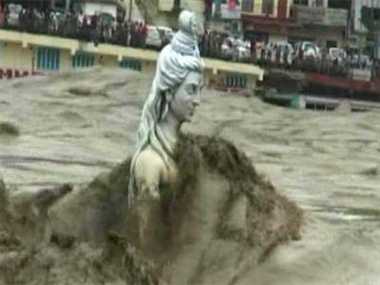‘Give us what you’ve got’ to
‘This is what we need’
According to a news report Kedarnath shrine was virtually submerged in mud and floods that claimed over 130 lives in Uttarkhand and Himachal Pradesh and left over 70,000 pilgrims for Himalayan shrines stranded. The shrine of Shiva, visited by Hindu pilgrims from across the world, however, was only partly damaged amid the death and destruction flash floods, cloudbursts and landslides caused in various parts of Uttarakhand for the third consecutive day on Tuesday. River water levels are continuing to rise across the state, clogging roads and leaving hundreds of pilgrims stranded on their way to visit shrines. The state government was also readying food parcels and drinking water to be dropped by helicopters to remote villages cut-off by the torrential rains.
The Prime Minister, Dr. Manmohan Singh, spoke to the Chief Minister of Uttarakhand earlier this evening and inquired about the flood situation in the state. The Prime Minister assured the Chief Minister of Uttarakhand of all assistance in rescue and relief operations in the flood hit state.
As per UN International Strategy for Disaster Reduction (UNISDR), since the 1980s, the risk of economic loss due to floods in Organisation for Economic Cooperation and Development countries has increased by more than 160 percent, outstripping the growth of GDP per capita. “What we need from them is not only corporate social responsibility and money, but their active involvement. It can be as simple as building a dyke around their factories, choosing the right locations to build factories and coming up with disaster contingency plans.” There are only two options, either reduce the speed of development or invest more in flood control.”
“Many of these countries now see disaster management as a priority. There has been a change from the government saying, ‘Give us what you’ve got’ to ‘This is what we need’. Asia is the most disaster-prone region in the world; in 2010, disasters affected more than 200 million people. In global terms, 89 percent of all people affected by emergencies live in Asia. But coordinating the increasing capacities of nations to respond to their own crises and those of others remains largely unchartered territory for regional groups.




